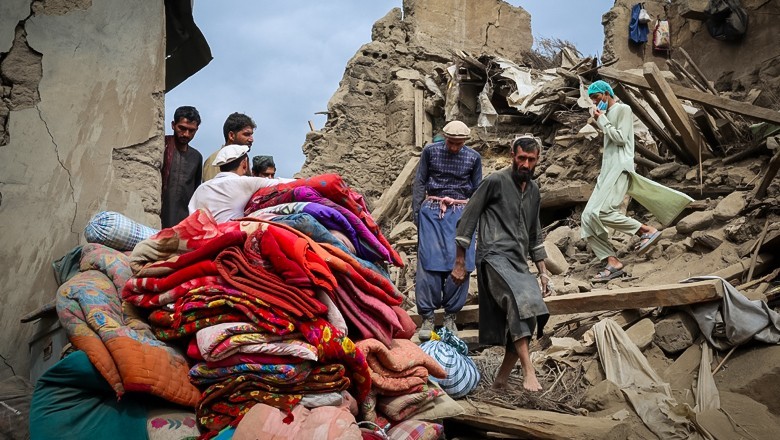Afghanistan earthquake death toll tops 2,200 as rescue efforts continue

Web Desk
|
4 Sep 2025
Rescue efforts continued in Afghanistan on Thursday as workers pulled bodies from the debris of homes destroyed by powerful earthquakes, with the official death toll surpassing 2,200.
Survivors, left homeless, faced grim conditions while aid groups warned of rapidly depleting resources.
The Afghanistan government confirmed that 2,205 people had died and at least 3,640 were injured in the quakes that struck the country’s mountainous east. Search operations were ongoing as officials cautioned that more casualties were expected.
“Everything we had has been destroyed,” said Aalem Jan, whose home in Kunar province collapsed in the tremors. “The only remaining things are these clothes on our backs.” He and his family were seen sitting under trees with their few belongings piled nearby.
The first quake, measured at magnitude 6, struck on Sunday at a shallow depth of 10 kilometers (six miles), causing widespread destruction in Kunar and Nangarhar provinces.
A second tremor of magnitude 5.5 hit on Tuesday, sparking panic, triggering landslides, and disrupting rescue efforts by blocking access roads to remote villages.
Authorities reported that more than 6,700 houses had been destroyed. The United Nations warned that the number of casualties could increase as people remained trapped beneath collapsed structures, stressing that “time is running out for survivors.”
Also Read: UN asks Pakistan to stop sending refugees back after deadly quake in Afghanistan
The International Federation of Red Cross and Red Crescent Societies described the humanitarian needs as “vast and growing rapidly,” estimating that up to 84,000 people were directly or indirectly affected, with thousands left displaced.
Islamic Relief Worldwide, a UK-based charity, said that in some of the hardest-hit villages in Kunar province, two-thirds of the population had either been killed or injured, while 98 percent of buildings were destroyed or severely damaged.
Footage from affected areas showed survivors digging through rubble with pickaxes, carrying the dead on woven stretchers, and preparing graves while waiting for aid. Trucks loaded with flour and rescue supplies were seen heading to remote regions, while authorities airdropped commando units to sites inaccessible by helicopter.
Afghanistan’s geography makes it highly vulnerable to earthquakes, particularly in the Hindu Kush mountains where the Indian and Eurasian tectonic plates collide. Homes built mainly of stone, dry masonry, and timber offered little protection.
The UN Office for the Coordination of Humanitarian Affairs noted that aftershocks were continuing, with unstable ground made worse by days of heavy rain, prompting families to remain outdoors rather than risk returning to their damaged homes.












Comments
0 comment